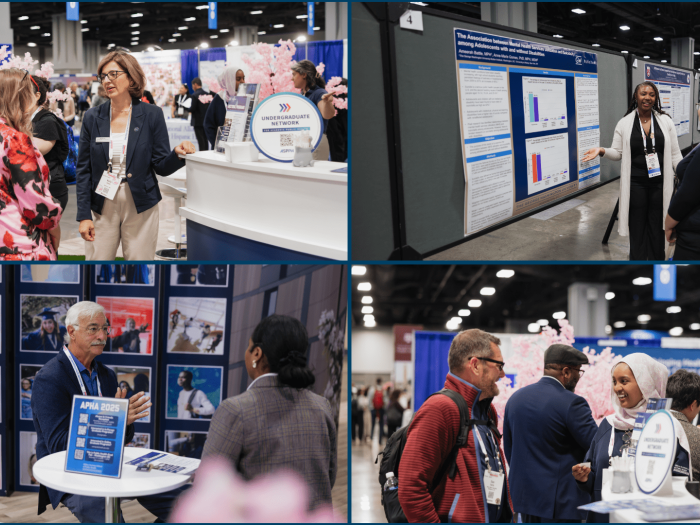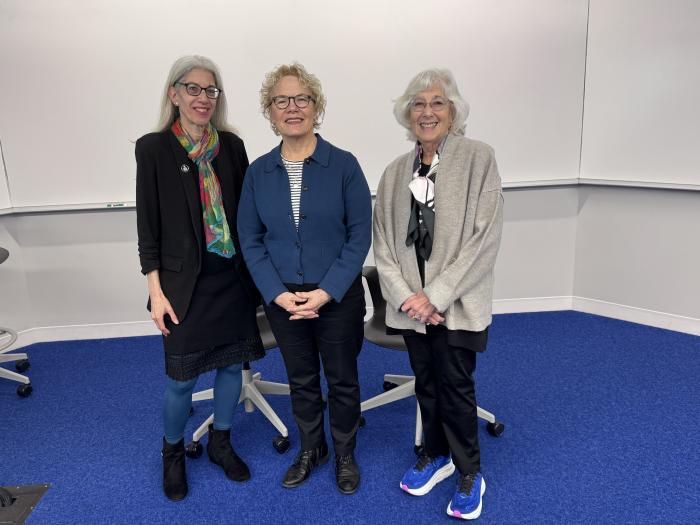Office of Inclusive Excellence Monthly Highlights - January
Welcome to january!
January marks Poverty Awareness Month—a time to reflect on how systemic inequities perpetuate poverty and its impact on fundamental needs like access to food. Food insecurity, a core aspect of poverty, affects millions of people nationwide, including a significant portion of college students, both within our campus community and in our surrounding neighborhoods.
Understanding the Issue
Nationally, nearly 1 in 4 undergraduate students faces food insecurity, with Pell Grant recipients being particularly vulnerable.
From a study conducted in 2021 here at GW by the Capital Peers, the numbers tell a stark story:
56% of GW students reported experiencing food insecurity
44% felt their food didn't last, and they couldn't afford more
1 in 4 students reduced meal sizes or skipped meals due to financial strain
These statistics reflect deeper inequities—students from low-income backgrounds, first-generation college students, and those from historically marginalized groups often bear the brunt of these challenges.
Campus Context
Being situated in the heart of Washington, DC, we must recognize that food insecurity and poverty are not just campus issues but deeply interconnected with our broader community. Our location provides both a stark reminder of these challenges and unique opportunities to engage in meaningful solutions that bridge campus and community needs.
What We Can Do
As a community committed to equity and public health, we have a shared responsibility to support those affected by poverty. Here are ways we can help:
- Support The Store: GW's student-run food pantry provides free, anonymous access to groceries and essentials for students in need.
- Contribute to Swipe Out Hunger: Faculty, staff, and students can donate unused Dining Dollars, Campus Cash, or Meal Swipes.
- Engage in Advocacy and Education: Participate in conversations and initiatives aimed at reducing economic inequities through the Honey W. Nashman Civic Center and engageDC.
- Continue to Learn: Check out GWU's Global Food Institute and their upcoming classes!
Local Shelters for Volunteer Opportunities
- Martha's Table - 2375 Elvans Road SE
- DC Central Kitchen - 425 2nd Street NW
- Miriam's Kitchen - 2401 Virginia Avenue NW
- So Others Might Eat (SOME) - 71 O Street NW
- Central Union Mission - 65 Massachusetts Avenue NW
Resources for Students
- The Store: Open to all GW students
- GW Emergency Funding: Apply Here
- Budgeting & Nutrition Education: Resources from Capital Peers
- DC Food Banks: DC Hunger, Mission DC, Capital Area Food Bank
- SNAP Benefits: SNAP for College Students
- GWorld Food Vendors: GWorld101!
Reflecting on Our Values
Poverty Awareness Month challenges us to consider how we create an environment where all members of our community feel supported and valued. It reminds us that public health is deeply intertwined with economic equity, and addressing poverty is integral to our mission.
What's Happening Around Campus
in the news

Milken Institute SPH Shines at APHA 2025: Three Days of Innovation, Collaboration, and Impact!
November 12, 2025
In November 2025, the Milken Institute SPH joined colleagues and leaders from across the field at the American Public Health Association's Annual Conference.

New Analysis: Community Health Centers Face Financial Crisis Amid Policy Shifts
GW experts available for interviews
November 10, 2025
New Analysis: Community Health Centers Face Financial Crisis Amid Policy Shifts

Addressing Rural Health Challenges: Lessons from the Field
At the 2025 Geiger Gibson Distinguished Visitor presentation, rural health leader Mary Ann Zelazny shared the realities and resilience of community health centers in upstate New York.
October 30, 2025
At the 2025 Geiger Gibson Distinguished Visitor presentation, rural health leader Mary Ann Zelazny shared the realities and resilience of community health centers in upstate New York.

